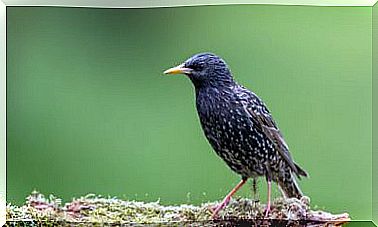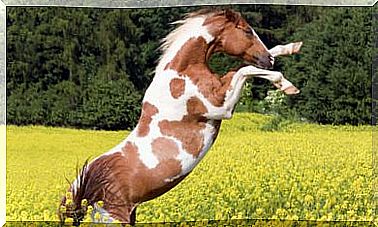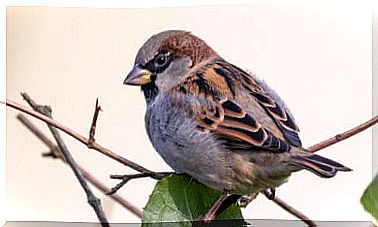Praying Mantis: Characteristics, Behavior And Habitat
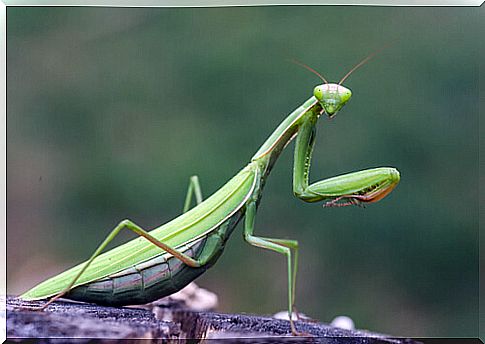
The praying mantis is a very recognizable medium-sized insect known for the strange position of its front legs, with which it seems that it is praying.
Today, it is not only found in the wild but also as an exotic pet in some homes. Lovers of insects see in this beautiful specimen, a species with many interesting aesthetic qualities. We will tell you more about it below.
Characteristics of the praying mantis
The praying mantis is an insect that is between 10 and 12 cm long. It should be noted that the females are usually slightly larger than the males. It has an elongated thorax and two long antennae that protrude from its head.
It is very interesting that their front legs, which they seem to always have in a prayer position, have spines that help to catch and retain prey.
The color of the praying mantises depends on the environment in which it has made the last change of fur. Its color can vary from green to brown, in order to help it camouflage itself.
That is, if it molts in an area with a lot of grass, it will be green. If straw is abundant, it will be yellowish or brownish. Therefore, the mantis is very well camouflaged in its habitat and it is difficult to see it.
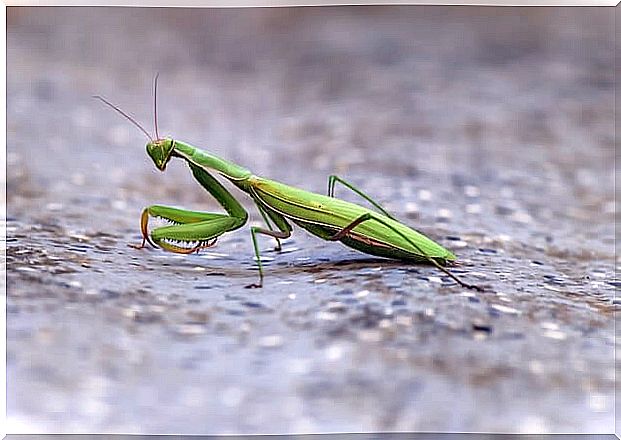
One of the characteristics of the mantis and the rest of the species of mantidae, is that it can move its head 180º to also observe over its back.
Their life expectancy is around a year, and they go through 6 molts to reach adult size. They hatch from eggs laid by females (hundreds at each clutch), and when they are young, they look the same as an adult mantis, but much smaller.
Contrary to what some people believe, the praying mantis is not poisonous or itchy. In addition, it helps to control the pests of certain insects in the open spaces. So we could say that it is even beneficial to have mantises in our gardens.
Behavior
The mantis is a carnivore and a patient predator. It is capable of waiting for its prey, whom it waits almost immobile and attacks by surprise and quickly.
Praying mantises feed mainly on: moths, flies, crickets, grasshoppers and other small insects. Although there are testimonies that indicate that, in case of opportunity, mantises can hunt and eat amphibians or reptiles, and even small birds.
One study claims that praying mantises hunt small birds (like hummingbirds) more often than we think. In addition, they hunt with the help of their powerful front legs, which shoot at a speed imperceptible to the human eye, and with their spines they catch their prey.
Mantises are solitary insects that normally live independently. They only come together to mate, and if two or more males match, they will fight to the death. Only the last alive will be able to mate. The behavior of some females of eating the male’s head after mating is known, but it is a less common behavior than is believed.
Habitat
The praying mantis arose in Europe and Asia, and man artificially introduced it to North America. Today mantises can be found throughout Europe, the upper two-thirds of Asia, almost all of North America, and in a couple of locations in central Africa and the southernmost part of South America.
The mantis is a field insect and is found in orchards, grasslands or places that are not very humanized in general. It is not an insect that we are going to find walking through the city. If not, he likes to be able to camouflage himself among the grass, leaves and tree branches. Only then can it wait for its prey taking advantage of the environment.

Mantis as a pet
Despite being a carnivorous insect of a size larger than usual (although compared to the kingdom of insects it is considered to be medium in size), which hunts prey of its size or larger, such as birds, mantises are have become fashionable as pets.
To have a mantis as a pet, you need a terrarium in which it can live. It shouldn’t be so big that it can’t find its prey, but it shouldn’t be so small that it doesn’t have room to move. To feed it, it must be supplied with live insects that it can hunt. The terrarium should be sprayed every day with fresh water, to maintain a good level of humidity, and so that you can drink the condensed water droplets.
You can hunt a praying mantis in a garden or buy eggs from a specialty store. Of course, they must live separately, otherwise they would fight each other.

